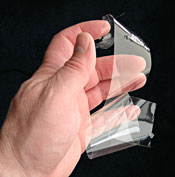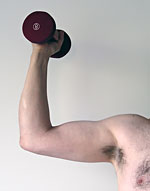
What I learned |
|
About selling my house, I mean. Don't buy cheap tape
You'll be really sorry. It sticks to itself and ties itself in knots and just generally fights you every step of the way. I bought cheap packing tape from Staples, thinking there was no need to pay for the 3M brand name. Wrong! The Staples tape was half the thickness (I had some 3M tape, so I was able to compare) and ended up being a constant annoyance. Since I'd bought six rolls, I felt compelled to use them up. Far better if I'd thrown them away, chalked it up to experience, and bought good tape instead. Think like GlinkIlyce Glink's "50 Simple Steps You Can Take to Sell Your Home Faster and for More Money in Any Market," despite its unwieldy title, is a small book that pays big dividends. I read it several times over the past few months, and followed most of Glink's recommendations. I learned that you want prospective buyers to look around and say "Wow! There's room for ALL my stuff here...and this place is ready to move into, with no renovation needed." To that end, Glink says, get rid of 50-70% of your stuff...and then arrange the rest tastefully with lots of empty space between it. A half-full closet looks twice as big as a full one. And so on. There's a lot more, and all of it is solid, practical advice written in a friendly, conversational tone by a woman who knows the real estate market very well. This book is a little gem! Paint smells good to buyersI was a little concerned that prospective buyers would be turned off by the lingering smell of paint, since I had painted my last room just twelve hours before the first showing. I was wrong—they loved it! To a buyer, that smell says "This place has just been repainted, so you won't have to." It's that "ready to move in" idea—very attractive to buyers. Spring's the thingI turned 55 in December, and I could have retired then. But I knew houses sell slowly in the winter and bring lower prices...so I waited until April first, then spent a month or so getting the place in shape...and had an offer within 24 hours of showing it. Sure, the market was hot...but that's exactly the point: it would likely have been a lot colder if I'd tried to sell in the dead of winter. Give yourself plenty of timeDon't make yourself crazy with unrealistic schedules. I allowed weeks of slop in mine, and ended up needing almost all of it. Could I have done it in less time? Sure...but I would have been physically exhausted and mentally stressed. Why make your life miserable? What's the rush? A transition this big is stressful enough; there's no need to add tight deadlines to the mix. Plan for plenty of extra time, and try to relax. At least once a week, take a day off from packing. Go see a movie. Otherwise you'll just turn the whole experience into an unpleasant one. Treasure your friendsI wish I had a group shot to put here, showing all the friends who helped me out. Yes, I know I talked about this on the previous page, but it bears repeating: I could not have pulled this off without them. Literally. I would have been months behind schedule; it would have been a disaster. The moral is this: next time your friends need help moving, pitch in—some day they may save your ass! Watch your backAnd your arms. The last time I moved, I hurt my back and was in considerable pain for weeks afterward. And that was almost twenty years ago, when I was in my mid-thirties. I haven't gotten any younger, and I didn't want my full-time adventure to start with chronic lower back pain. So starting nine months before the move, I got serious about exercise. OK, semi-serious. Look, I've never been a physical-fitness buff (which is probably why I hurt my back last time), so I knew a crash exercise program wasn't going to work for me—I don't have the dedication to stick with it. 
So I worked out a very simple program of stretches and mild exercises—mainly sit-ups and pelvic thrusts, to strengthen my back—that only took ten minutes. I also bought a pair of 8-pound dumbbells to try to build up my arms a little, in preparation for lifting boxes. The important thing is that I did these exercises faithfully every morning. If I'd tried to go in for some ambitious, large-scale exercise program, pretty soon I'd have started slacking off. But ten minutes a day? I could handle that. Those of you who take physical fitness seriously are probably snickering right about now, and you're entitled. But you know what? It worked. After nine months, my back was very noticeably stronger, and to my surprise I actually had visible biceps muscles—something I never had before. Wow! OK, now you're really laughing. But for a guy who grew up thinking of himself as a skinny kid with glasses, this was kind of fun. And it paid off: aside from a freak side-muscle strain early in the packing process, I haven't had a hint of lower back pain throughout the move. And lifting boxes was easier with a little muscle on my upper arms. So my advice is: start getting in shape at least six months before you move. It doesn't take much—ten minutes a day or less—to make a big difference. Getting rid of stuff is fun!I'd heard this from others who went RVing full-time: unloading your belongings is a liberating experience. I had my doubts, though, because I'm a real pack-rat and I love all my stuff. To my surprise, though, I found that I enjoyed getting rid of it. I sold what I could (almost all of it to friends and former coworkers, at very low prices—I wasn't looking to get rich); gave away a lot (which made me feel generous and made the friends I gave it to happy); and threw out piles of stuff (much of which was promptly rescued by my neighbors). There was very little of it that I felt bad about giving up. My Aeron chair, perhaps...and of course my thousands of books, which are not gone but packed away, not to see the light of day for many years to come. I will miss my books. But many of my other belongings I found it remarkably easy to let go. |

